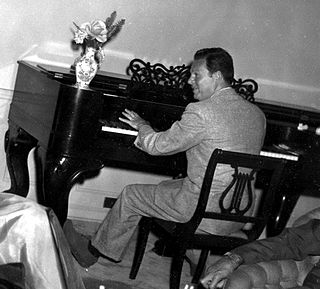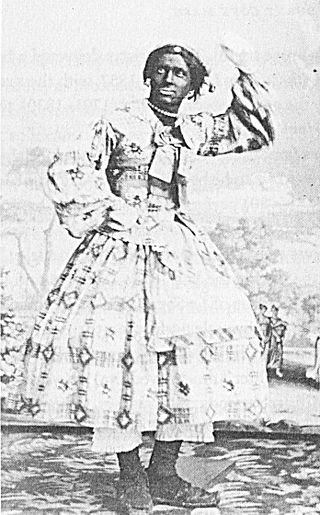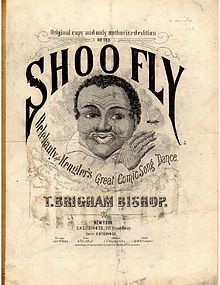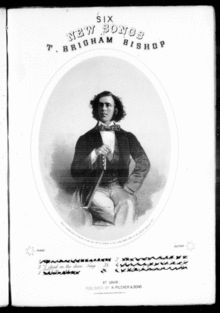
"My Country, 'Tis of Thee", also known as simply "America", is an American patriotic song, the lyrics of which were written by Samuel Francis Smith. The song served as one of the de facto national anthems of the United States before the adoption of "The Star-Spangled Banner" as the official U.S. national anthem in 1931. The melody used is adopted from the national anthem of the United Kingdom, "God Save the King".

"Silent Night" is a popular Christmas carol, composed in 1818 by Franz Xaver Gruber to lyrics by Joseph Mohr in Oberndorf bei Salzburg, Austria. It was declared an intangible cultural heritage by UNESCO in 2011. The song was first recorded in 1905 and has remained a popular success, appearing in films and multiple successful recordings, as well as being quoted in other musical compositions. It is the world's most recorded Christmas song, with more than 137,000 known recordings.

Stephen Collins Foster, known as "the father of American music", was an American composer known primarily for his parlour and minstrel music during the Romantic period. He wrote more than 200 songs, including "Oh! Susanna", "Hard Times Come Again No More", "Camptown Races", "Old Folks at Home", "My Old Kentucky Home", "Jeanie with the Light Brown Hair", "Old Black Joe", and "Beautiful Dreamer", and many of his compositions remain popular today.

"John Brown's Body" is a United States marching song about the abolitionist John Brown. The song was popular in the Union during the American Civil War. The song arose out of the folk hymn tradition of the American camp meeting movement of the late 18th and early 19th century. According to an 1889 account, the original John Brown lyrics were a collective effort by a group of Union soldiers who were referring both to the famous John Brown and also, humorously, to a Sergeant John Brown of their own battalion. Various other authors have published additional verses or claimed credit for originating the John Brown lyrics and tune.

The "Battle Hymn of the Republic", also known as the "Mine Eyes Have Seen the Glory" or the "Glory, Glory Hallelujah" outside of the United States, is an American patriotic song that was written by the abolitionist writer Julia Ward Howe during the American Civil War.
A lyricist is a writer who writes lyrics, as opposed to a composer, who writes the song's music which may include but not limited to the melody, harmony, arrangement and accompaniment.

"We Three Kings", original title "Three Kings of Orient", also known as "We Three Kings of Orient Are" or "The Quest of the Magi", is a Christmas carol that was written by John Henry Hopkins Jr. in 1857. At the time of composing the carol, Hopkins served as the rector of Christ Episcopal Church in Williamsport, Pennsylvania, and he wrote the carol for a Christmas pageant in New York City. It was the first widely popular Christmas carol written in America.

"Away in a Manger" is a Christmas carol first published in the late nineteenth century and used widely throughout the English-speaking world. In Britain, it is one of the most popular carols; a 1996 Gallup Poll ranked it joint second. Although it was long claimed to be the work of German religious reformer Martin Luther, the carol is now thought to be wholly American in origin. The two most common musical settings are by William J. Kirkpatrick (1895) and James Ramsey Murray (1887).

John Rosamond Johnson was an American composer and singer during the Harlem Renaissance. Born in Jacksonville, Florida, he had much of his career in New York City. Johnson is noted as the composer of the tune for the hymn "Lift Every Voice and Sing". It was first performed live by 500 Black American students from the segregated Florida Baptist Academy, Jacksonville, Florida, in 1900. The song was published by Joseph W. Stern & Co., Manhattan, New York.
Parlour music is a type of popular music which, as the name suggests, is intended to be performed in the parlours of houses, usually by amateur singers and pianists. Disseminated as sheet music, its heyday came in the 19th century, as a result of a steady increase in the number of households with enough resources to purchase musical instruments and instruction in music, and with the leisure time and cultural motivation to engage in recreational music-making. Its popularity faded in the 20th century as the phonograph record and radio replaced sheet music as the most common means for the spread of popular music.

"On the Banks of the Wabash, Far Away" was among the best-selling songs of the 19th century, earning over $100,000 from sheet-music revenues. Written and composed by American songwriter Paul Dresser, it was published by the Tin Pan Alley firm of Howley, Haviland and Company in October 1897. The lyrics of the ballad reminisce about life near Dresser's childhood home by the Wabash River in Indiana, United States. The song remained popular for decades, and the Indiana General Assembly adopted it as the official state song on March 14, 1913. The song was the basis for a 1923 film of the same title. Its longtime popularity led to the emergence of several lyrical versions, including an 1898 anti-war song and a Swedish version that was a number-one hit.
Kingdom songs are the hymns sung by Jehovah's Witnesses at their religious meetings. Since 1879, the Watch Tower Society has published hymnal lyrics; by the 1920s they had published hundreds of adapted and original songs, and by the 1930s they referred to these as "Kingdom songs" in reference to God's Kingdom.

Irving Gordon was an American songwriter.

James Lord Pierpont was an American songwriter, arranger, organist, Confederate States soldier, and composer. Pierpont wrote and composed "Jingle Bells" in 1857, originally titled "The One Horse Open Sleigh".

Adon Olam is a hymn in the Jewish liturgy. It has been a regular part of the daily and Shabbat (Sabbath) liturgy since the 15th century.
"Skip to My (The) Lou" is a popular American partner-stealing dance from the 1840s.
Alonzo "Zo" Elliot was an American composer and songwriter.

Shoo Fly, Don't Bother Me or Shew! fly, don't bother me is a minstrel show song from the 1860s that has remained popular since that time. It was sung by soldiers during the Spanish–American War of 1898, when flies and the yellow fever mosquito were a serious enemy. Bing Crosby included the song in a medley on his album Join Bing and Sing Along (1959). Today, it is commonly sung by children, and has been recorded on many children's records, including Disney Children's Favorite Songs 3, performed by Larry Groce and the Disneyland Children's Sing-Along Chorus.

The Parade of the Tin Soldiers, also known as The Parade of the Wooden Soldiers, is an instrumental musical character piece, in the form of a popular jaunty march, written by German composer Leon Jessel, in 1897.

Ebenezer G. B. Holder was an American minstrel performer, composer, and songwriter. As a composer and songwriter he published under the name E. G. B. Holder and created works for both minstrel shows and musicals. His musical Shamus O'Brien was staged on Broadway in 1868. As a performer, he was known on the stage as Rollin Howard and achieved fame as a female impersonator in blackface under that name.


















